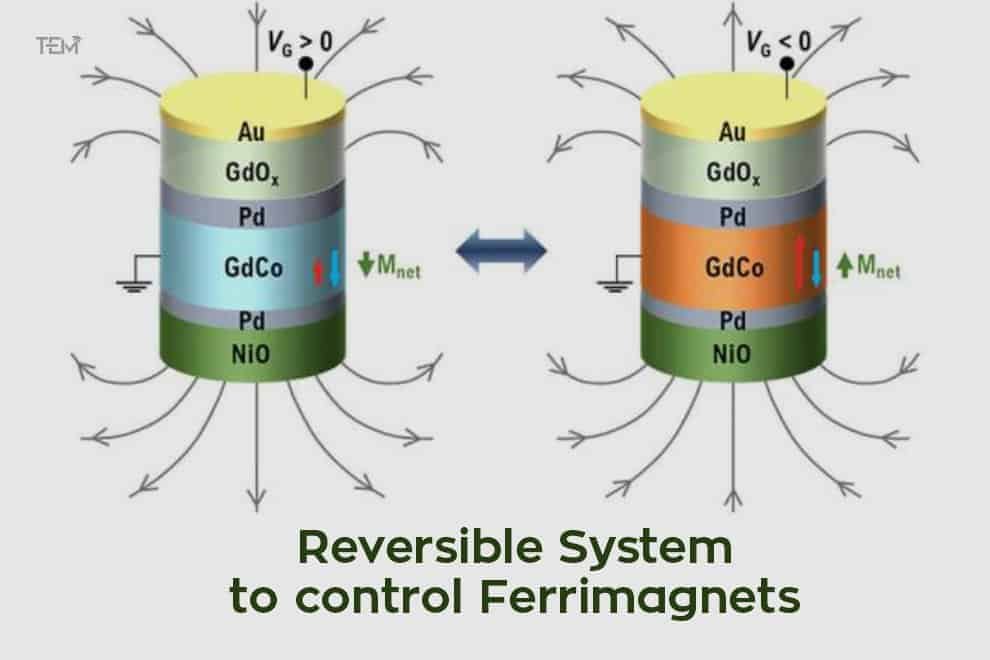Key Highlights:
- Researchers developed a system to switch the orientation of the magnetic field with a small voltage.
- Ferrimagnetic materials could enable faster data storage and small sensors.
- The discovery could usher in a new era of ferrimagnetic logic and data storage devices.
Ferromagnetic and Ferrimagnetic Materials
The most common magnets that we come across daily are made up of ‘ferromagnetic’ materials. Their collective force is strong due to the north-south magnetic axes of most atoms. Therefore, these materials are used in almost every data storage device nowadays.
Some less commonly used magnets are made up of ‘ferrimagnetic’ materials. The magnetic properties of ferrimagnetic materials are strongly influenced by external forces. These magnets have some atoms aligned in one direction while others aligned exactly in the opposite direction. Because of this alignment, the magnetic field will be produced in the direction where most atoms are pointed restricting the use of these for data storage. Till now, there was no easy way of switching the orientation of these magnets, to flip from a 0 to a 1 in a data storage device. However, researchers have identified a method of rapidly switching the magnetic polarity of a ferrimagnet 180 degrees.
How this system works?
After extensive research, scientists have found a way of switching the orientation of these magnets using a small applied voltage. This method can be used to control properties inside the bulk of the material by using an electric field or controlling surface properties using applied voltages.
The material that has been used in this system is gadolinium cobalt – a part of a class of materials that are known as rare earth transition metal ferrimagnets. These two elements form interlocking lattices of atoms where the gadolinium has magnetic axes aligned in one direction and cobalt atoms point in the opposite direction. The balance between these two determines the material’s overall magnetization.
The Reversible System Researchers tried inventing ways to switch the net magnetic field orientation by 180 degrees. They tried to experiment by splitting water molecules along the film’s surface. They used a voltage to split the water molecules into oxygen and hydrogen. As a result, the oxygen vented away while the hydrogen atoms – which are single protons – penetrated deeply into the material altering the balance of the magnetic orientations. This was exactly the kind of reversal that was required for devices such as magnetic memories. The process is highly energy-efficient as the reversal did not require applied electrical current that could cause wastage of energy through heat dissipation.










